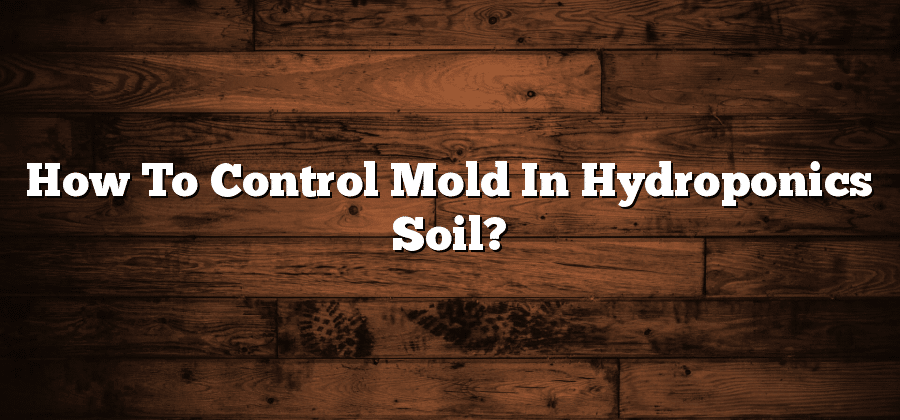Identifying the Causes of Mold in Hydroponics
Hydroponics is a method of growing plants without soil, using a nutrient-rich water solution instead. While this approach offers numerous benefits, such as increased yields and water efficiency, it is not without its challenges. One of these challenges is the presence of mold, which can have detrimental effects on the health and productivity of your hydroponic system.
Identifying the causes of mold in hydroponics is essential for preventing its occurrence. One common cause is excessive humidity levels in the grow environment. Mold thrives in moist conditions, so it’s crucial to monitor and maintain the right level of humidity. Another factor to consider is poor air circulation. Stagnant air can create pockets of moisture, providing an ideal environment for mold growth. By addressing these causes, you can effectively mitigate the risk of mold in your hydroponic setup and ensure the success of your cultivation efforts.
Understanding the Role of Moisture in Mold Growth
Mold growth is a common problem in hydroponics systems that can have detrimental effects on plant health and productivity. Understanding the role of moisture in mold growth is crucial for effectively preventing and managing this issue. Moisture provides the ideal breeding ground for mold, as it creates a moist and damp environment where mold can thrive.
Excessive moisture can result from various factors, including overwatering, high humidity levels, and leaks or condensation within the hydroponic system. It is essential to monitor and control the moisture levels in your hydroponics setup to prevent mold growth. Regularly check the water levels in your reservoir and ensure they are maintained at the appropriate level for your specific plants. Additionally, consider investing in a dehumidifier or implementing proper ventilation to reduce humidity and condensation within your growing area. By proactively managing moisture, you can minimize the risk of mold growth and maintain a healthy and thriving hydroponics system.
Proper Air Circulation for Mold Prevention in Hydroponics
Proper air circulation plays a vital role in preventing mold growth in hydroponics systems. In these controlled indoor environments, where plants grow without soil, adequate air movement is crucial for maintaining optimal conditions and preventing the development of mold.
One of the primary reasons why proper air circulation is necessary is to mitigate excessive humidity levels. High humidity promotes the growth of mold spores and creates an environment conducive to their proliferation. By ensuring that air is constantly moving throughout the hydroponics system, the excess moisture can be dispersed, preventing it from settling on plant surfaces and creating a breeding ground for mold. Additionally, proper air circulation helps maintain uniform temperature and humidity levels, preventing stagnant air pockets that may contribute to moisture buildup and subsequent mold growth.
Choosing the Right Hydroponic Growing Medium
One of the most important factors to consider when setting up a hydroponic system is choosing the right growing medium. The growing medium is the material that provides a support system for the plants’ roots and helps to retain moisture. There are several different types of growing mediums available, each with its own advantages and disadvantages.
One popular choice for hydroponic growing mediums is coconut coir. This natural fiber, derived from the husk of coconuts, is an excellent option for water retention and aeration. It has a high water holding capacity and can release moisture slowly, providing a stable environment for the roots. Coconut coir is also resistant to fungal growth and is sustainable, making it an environmentally friendly choice. However, it can take some time to properly prepare and balance the pH levels before use.
Maintaining Proper Temperature and Humidity Levels
One of the key factors to consider when growing hydroponically is maintaining proper temperature and humidity levels. These two elements play a crucial role in the success of your hydroponic system, as they can significantly impact the growth and development of your plants.
Temperature control is essential in hydroponic systems because different plants thrive in different temperature ranges. Generally, most plants prefer temperatures between 65°F (18°C) and 80°F (27°C), but it is important to research and understand the specific temperature requirements of the plants you are growing. Ensuring that your hydroponic system is within the recommended temperature range promotes optimal growth and prevents the risk of stress or damage to your plants.
Similarly, humidity levels must also be carefully regulated. High humidity levels can create a favorable environment for mold growth, which can be detrimental to your plants. On the other hand, low humidity levels can cause plants to lose excessive moisture, affecting their overall health. Monitoring and adjusting humidity levels based on the needs of your plants is crucial in maintaining a balanced and healthy hydroponic system.
In order to maintain proper temperature and humidity levels, consider investing in tools such as thermometers and hygrometers. These devices will help you accurately measure and monitor the conditions in your hydroponic system. Additionally, make use of ventilation systems, exhaust fans, and air circulation fans to regulate the temperature and humidity levels. Proper ventilation will help remove excess heat, while ensuring a steady airflow will help prevent the buildup of excessive moisture.
Overall, maintaining proper temperature and humidity levels in your hydroponic system is essential for the health and success of your plants. By carefully monitoring and adjusting these factors, you can create an environment that is conducive to maximum growth and productivity.






